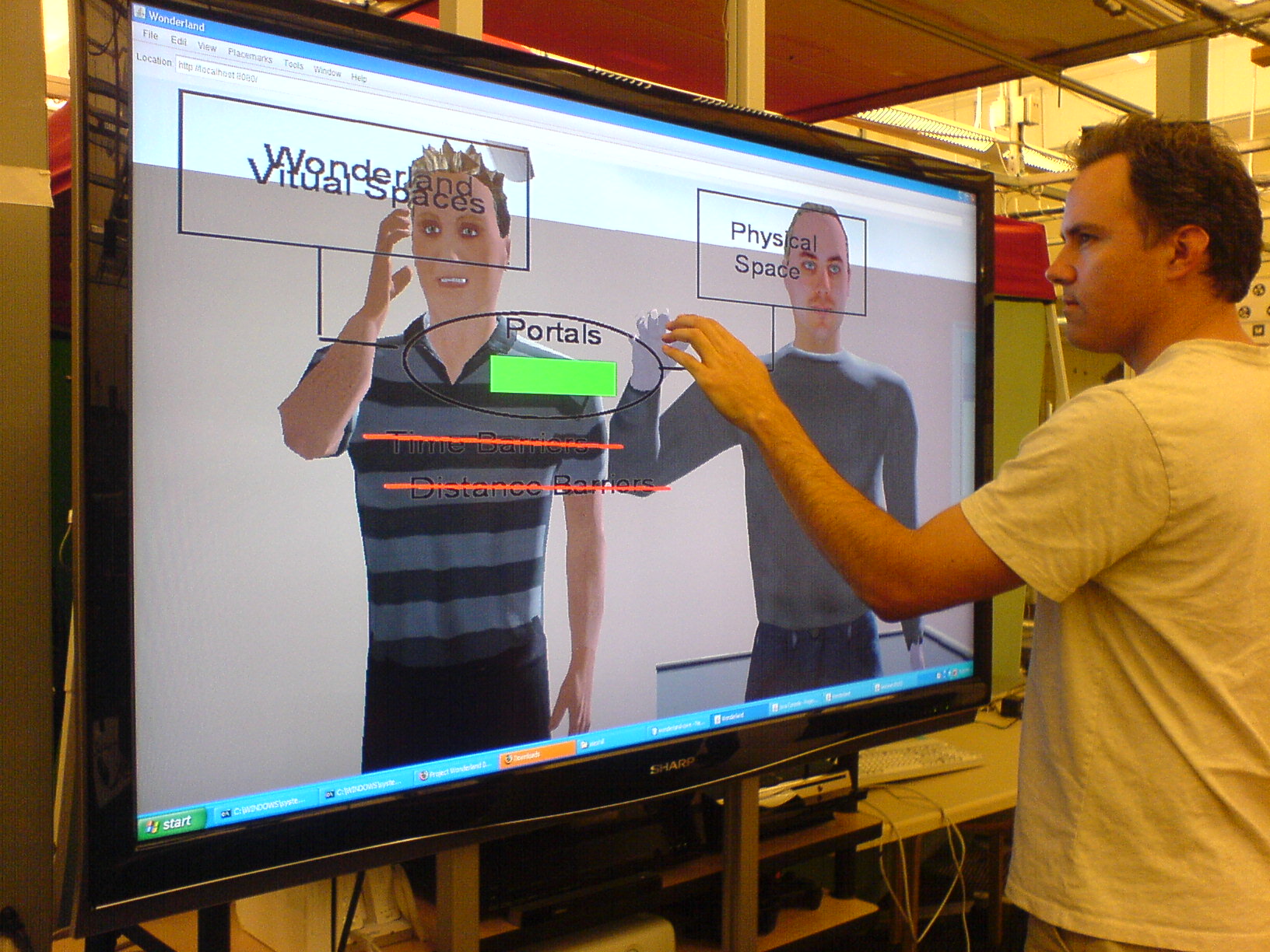
Distributed teams are nothing new to the workplace, but carrying out ‘normal’ collaborative activities is very difficult when team members are not co-located. Video-based techniques can reinforce the different spatial contexts in which distributed team members reside, effectively creating a dividing window. Physical teamroom artifacts such as sketches and brainstorming are not accessible across this boundary. Users have to split attention between colocated and remote members. In short, the collaborative work experience is utterly disrupted.
ClearSpace uses mixed reality to address some of these issues. Digital artifacts representing team room equipment, such as a whiteboard, are created in a 3D virtual world. These objects have the same positioning and functionality as their physical analogues. Meeting participants, regardless of their location or means of participation, are also integrated into the virtual world as avatars.
In traditional conferencing systems, remote participants have less communicative capability than co-located participants. Non-audible speaking and interaction cues, such as body language or gesturing, is missing in an audio system and severely restricted in a static video system. ClearSpace gives all users the same audio and visual representation as avatars in a virtual team room. Natural actions for co-located teams, such as a group splitting off for a private conversation by moving away from the main group, are supported by ClearSpace.
Various motion-capture systems, including face recognition and infrared tracking, track users and translate their movements to their avatars. For example, when a user steps up to a collaborative whiteboard and begins drawing, that user’s avatar will move to the analogous virtual whiteboard and make the same drawing gestures, as the same drawings are created on both the virtual and physical board.
ClearSpace’s virtual world is built using Project Wonderland, Sun Microsystem’s open-source virtual world toolkit.

Recent Comments